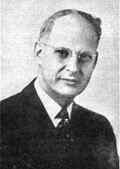the Fourth Week of Lent
Click here to join the effort!
Bible Dictionaries
Wilson's Dictionary of Bible Types
Browse by letter: A

Walter Lewis Wilson
Welcome to the 'Wilson's Dictionary of Bible Types', one of the dictionaries resources FREELY available on StudyLight.org!
Containing 1,163 entries cross-referenced and cross-linked to other resources on StudyLight.org, this resource can be classified as a required reference book for any good study library.
Bible typology is the systematic classification of Bible terms, concepts, and people that have common characteristics or traits. A Dictionary of Bible Types examines over 1,000 types, shadows, signs, symbols, pictures, figures, and patterns in the Bible with topics ranging from "Aaron" to "Yoke." This useful resource for teachers, study groups, and pastors provides explanations for over 6,000 different Scripture passages.
All scripture references and reference to other entries within the text have been linked. To use this resource to it's full potential, follow all the links presented within the text of the entry you are reading.
If you find a link that doesn't work correctly, please use our convenient contact form. Please tell us the reference work title, entry title and/or number (this can be found in the address line), and a brief description of the error found. We will review and make corrections where needed.
You can also use this form if you have any suggestions about how to improve the usability of this resource.
These files are public domain.
Text Courtesy of BibleSupport.com. Used by Permission.